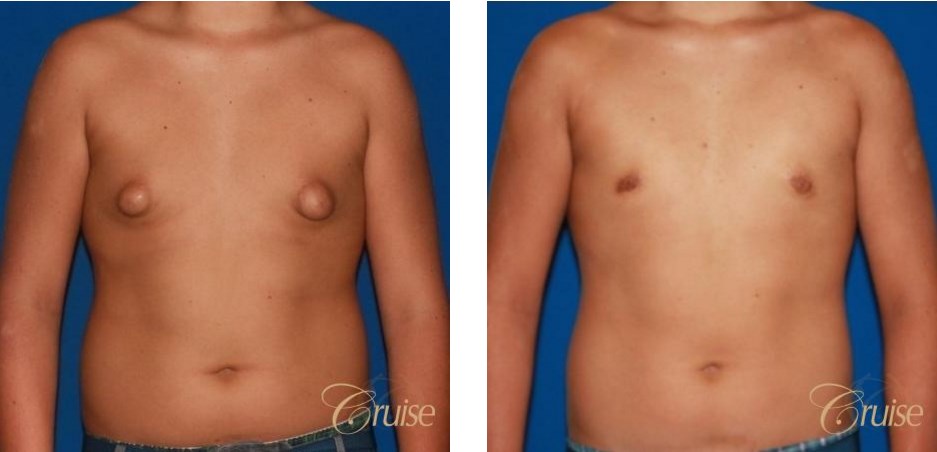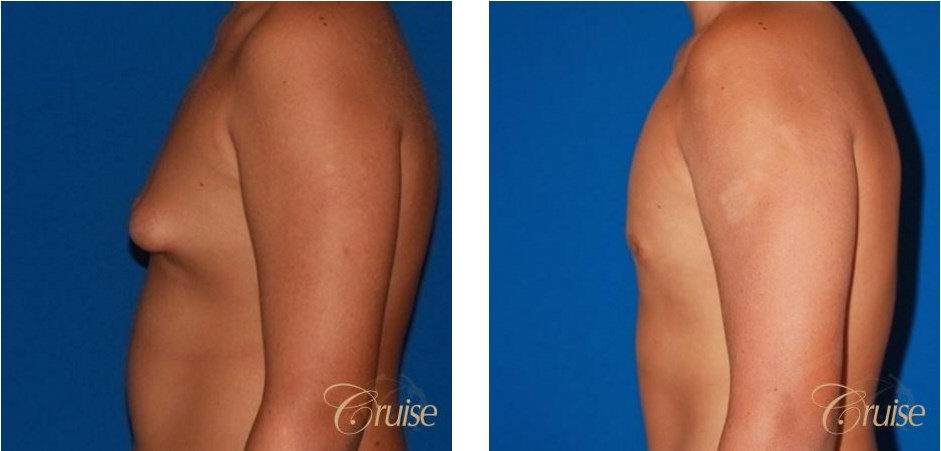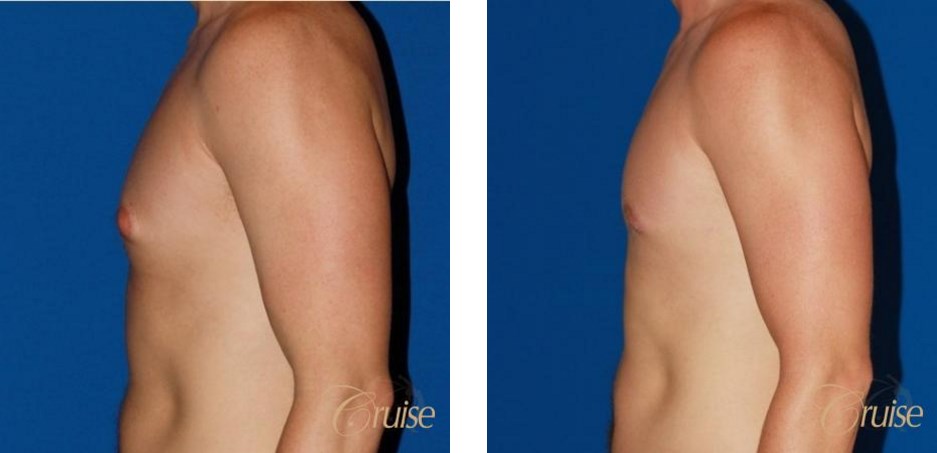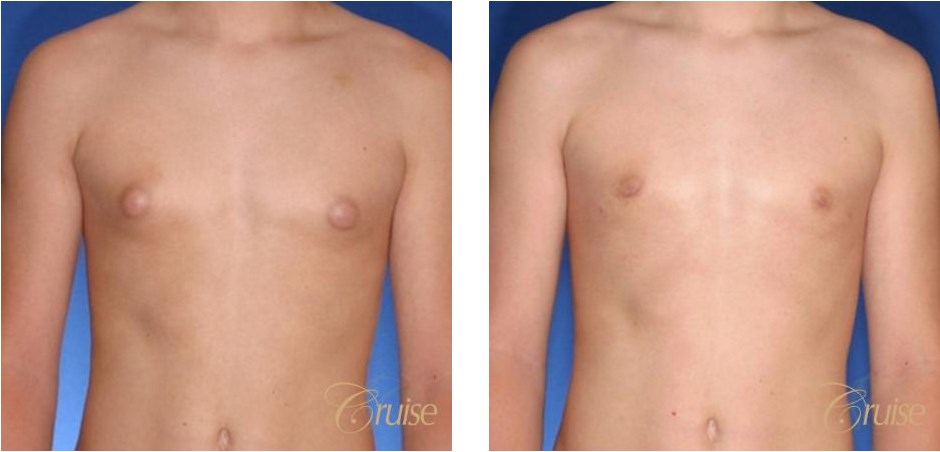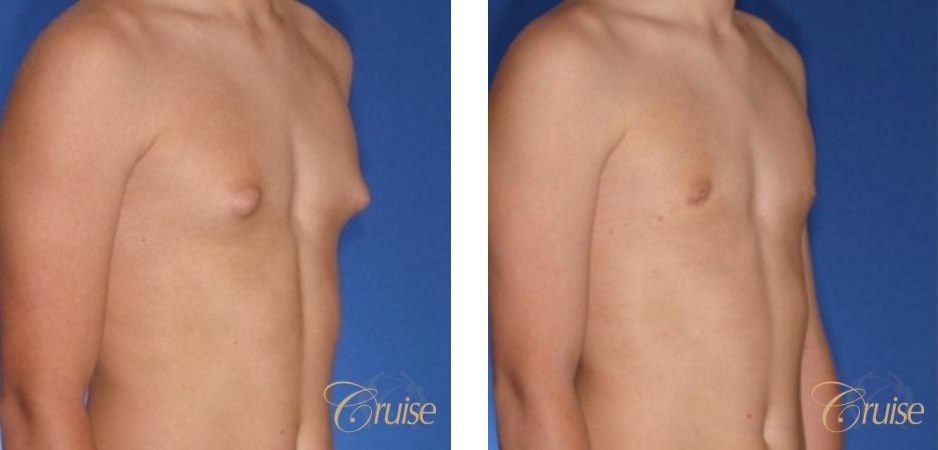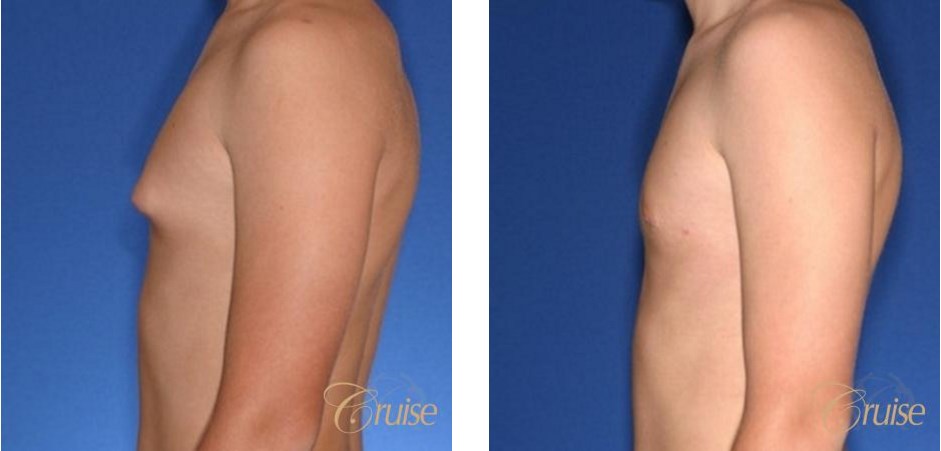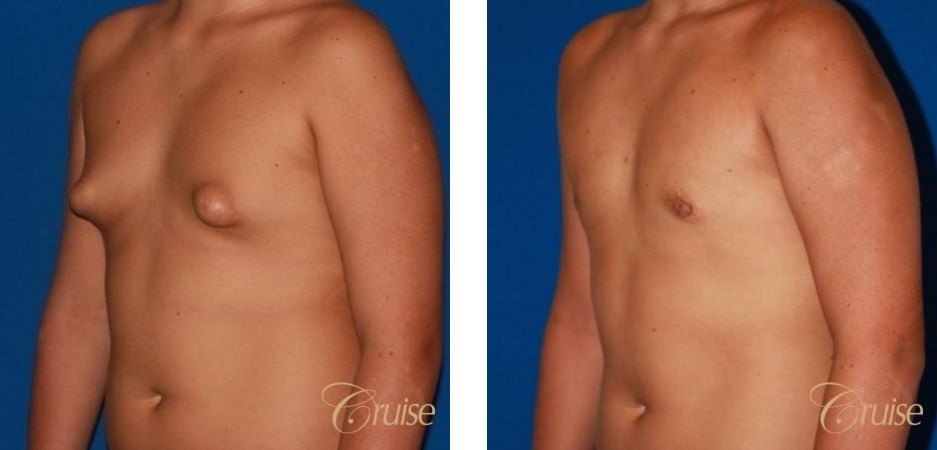What is Teenage Gynecomastia?

Teenage gynecomastia is the development of male breasts in adolescent boys who are pre-pubescent or going through puberty. It can appear in boys as young as 10 years old, with a peak onset between 13-15 years of age. Gynecomastia in teenagers usually goes away by the late teen years.
The excess breast tissue growth seen during puberty is a result of hormonal changes in the body affecting both androgens and estrogens. Within a period of 6 months to 2 years teenage gynecomastia should go away without any intervention. If it carries over into adulthood, it is considered true gynecomastia, and will not go away without surgical treatment. If you are overweight and suspect you have gynecomastia, it could be what is called pseudo-gynecomastia or fatty gynecomastia. This type of male breast development consists of fatty tissue, which does respond well to proper diet and exercise.
If you are seeking answers on how to get rid of your gynecomastia, we caution you to not fall victim to the many marketing scams on the Internet and TV selling medication, potions and lotions, or other hocus-pocus treatments promising to get rid of your breasts. Nothing on the market today has been medically proven to permanently get rid of gynecomastia other than surgery.
- Read more...
Do I Need Surgery?
The answer is subjective and really comes down to how gynecomastia is affecting your life. Some teens are not bothered enough by their gynecomastia to do anything about it, while others are completely devastated.
Ask yourself if having gynecomastia is negatively impacting your life. If you are visiting this site, it is probably fair to say you are frustrated enough with your condition to be researching options on the Internet.
Here are some questions to ask yourself:
- Do you only wear clothing that will help mask your chest?
- Do you shy away from intimacy?
- Do you keep a shirt on at the pool, beach, during intimacy?
- Are you depressed, withdrawn?
- Do you have lack self-confidence because of your gyne?
- Do you avoid social settings?
A Message to Parents:
Adolescent gynecomastia can be one of the most devastating issues a boy faces during these already turbulent years. It isn’t uncommon for teenage boys to hid their condition, even from their parents. It is important to look for signs that your son is being deeply affected by their condition and begin dialogue in a caring, nonjudgmental manner.
- Change in behavior
- Moody or depressed
- Style of clothing has changed to loose, baggy tops
- Becoming less interested in having a social life
- Avoids taking his shirt off around anyone
- Less interested in school, grades
- Doesn’t want to participate in PE or sports
Patient Perspective
Types of Teenage Gynecomastia & Procedure Information
Dr. Cruise has developed a classification system for the Types of Gynecomastia along with the treatment plan for each. Most adolescent gynecomastia falls into Type 1 or Type 2. Some heavier teens may have Type 3 or 4. The vast majority of teenage gynecomastia is performed in-office under local anesthesia, however general anesthesia is an option for those who prefer it.
For detailed information about the Types of Gynecomastia, along with the procedure details, healing process, and cost, click here.
Teenage Gynecomastia Before & After Photos
Financing Teenage Gynecomastia Surgery
Most teenage gynecomastia falls under Dr. Cruise’s Type 1 or Type 2 classification, which averages around $7,500 for surgery. Most of these cases are routinely performed in-office under local anesthesia. General anesthesia is available if preferred by the patient, however this will increase the total cost because the procedure has to be performed in an outpatient surgical facility with an anesthesiologist.
Financing options are available to assist families with the cost of surgery. Visit our gynecomastia financing page for more information.
Frequently Asked Questions
Q: How long do I have to wait to know if my gynecomastia will go away or not?
A: Once breast tissue is present for greater than 1 year it is not likely to go away on its own. If there are signs of improvement then waiting an additional year is reasonable.
Q: What is the chance my gynecomastia will continue to get worse?
A: Gynecomastia associated with pain/inflammation often represents active breast tissue growth. For this reason, if you are using steroids I would caution you to stop immediately. Gynecomastia, however, often develops without pain so lack of pain is not a reliable indicator. Finally, with skin laxity associated by normal aging, any type of gynecomastia will appear worse even if there is no further growth at all.
Q: What is the minimum age someone can have gynecomastia surgery?
A: As mentioned, gynecomastia surgery can be considered after 1 year assuming there are no signs of improvement. The need for surgery, however, is not only measure in time but also in how much suffering the patient is experiencing. The teasing and psychological abuse can be brutal and permanent; even after the gynecomastia has been removed! Long term gynecomastia can re-wire the brain into permanently hunching of their shoulders/poor posture and reduced self esteem. For these reasons, severe gynecomastia should be corrected earlier.
Q: Is there a chance I could get gynecomastia again after having surgery?
A: Gynecomastia is caused by glandular breast tissue, fatty tissue or fibrous tissue that is encapsulated within a breast capsule. If this tissue is removed it is gone forever. This is why it is important to have complete removal especially in patients with glandular tissue.
Q: Is gynecomastia genetic?
A: There are no scientific studies specifically identifying gynecomastia as a genetic condition. However, clinically it appears evident that it is.
Photo Submission Guideline

| Front | Left Side | Right Side | Oblique |

Luke, 19 after gynecomastia correction surgery and losing 80lbs.
Schedule a Consultation
If you are struggling with the appearance of male breasts and would like to remove your gynecomastia, contact our office through our online contact form. Dr. Cruise will gladly see you for an initial consultation. Call us today at (949) 644-4808!








